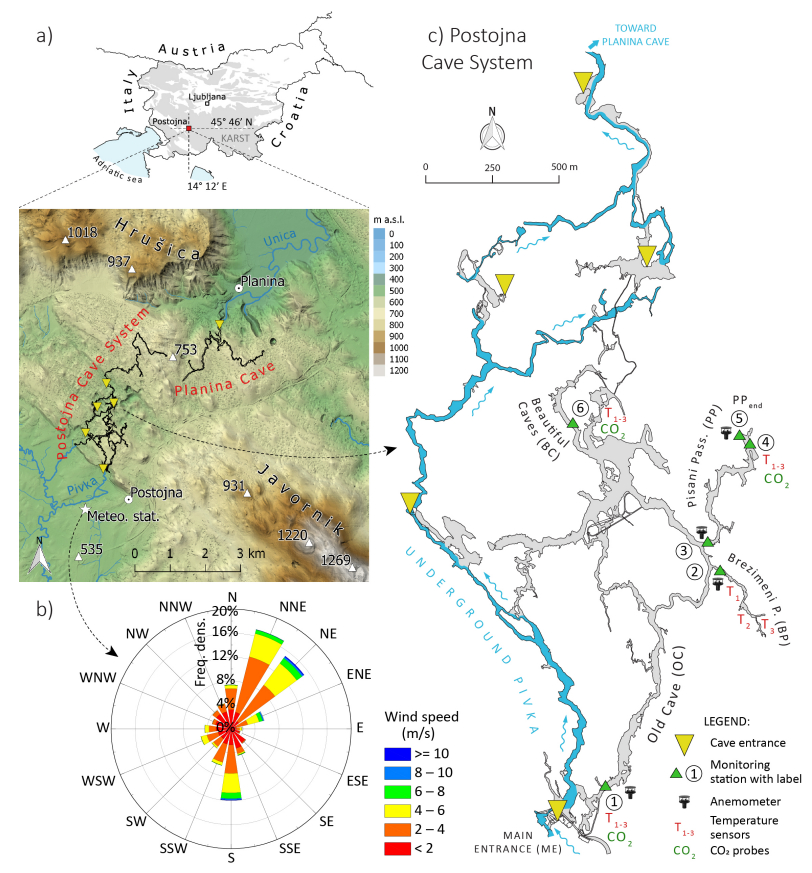Nenad Buzjak
The PPCS is a complex system of several caves (with known 5 separate entrances) connected by dry or flooded passages (Šebela 2019, Kukuljan et. al. 2021, Zagmajster et. al. 2021). It is the main cave system in the densely forested and uninhabited karst area between the town of Postojna in Postojnska kotlina, the town of Planina on Planinsko polje, and the town of Cerknica on Cerkniško polje. In the area above the PPCS, there are 16 large collapsed dolinas interrupting some system underground passages. The system extends over two dominant levels. The lower epiphreatic level is characterized by a perennial flow of the Pivka River, which sinks into the cave at the boundary between the Pivka Basin and the karst plateau. The upper level is a complex network of passages and breakdown chambers rich in speleothems and fluvial cave sediments. The cave system is developed in an about 800-m-thick layer of Cretaceous limestones and dolomites, between two NW-SE oriented faults, namely the northern Idrija fault and the southern Predjama fault.
According to the data from the Slovenian eKataster Cave database the system is 24.120 m long and 115 m deep.

Javornik Hills. Black contour lines show the extent of cave passages and yellow triangles are cave entrances.
The location of the national meteorological station is marked with a white star (S of Postojna Cave and W of
Postojna). b) Wind-rose diagram of the national meteorological station with wind speed, direction and frequency
density for the period 2017–2020 grouped into 16 bins. c) Map of Postojna Cave with continuous climate
monitoring sites (modified from Kukuljan et al. (2021). Map source: cave cadastre at the ZRC SAZU Karst
Research Institute. Source: Kukuljan et. al. 2021.

Literature:
Šebela, S. 2019: Chapter 98 – Postojna—Planina Cave System, Slovenia. In: Encyclopedia of Caves (Third Edition), Editor(s): William B. White, David C. Culver, Tanja Pipan, Academic Press, 812-821, https://doi.org/10.1016/B978-0-12-814124-3.00098-4
Kukuljan, L., Gabrovšek, F., Covington, M. 2021: The relative importance of wind-driven and chimney effect cave ventilation: Observations in Postojna Cave (Slovenia). International Journal of Speleology, 50 (3), 275-288, https://doi.org/10.5038/1827-806X.50.3.2392
Kukuljan, L., Gabrovšek, F., Covington, M.D., Johnston, V.E., 2021: CO2 dynamics and heterogeneity in a cave atmosphere: Role of ventilation patterns and airflow pathways. Theoretical and Applied Climatology.
https://doi.org/10.1007/s00704-021-03722-w
Zagmajster, M., Polak, S., Fišer, C. 2021: Postojna-Planina Cave System in Slovenia, a Hotspot of Subterranean Biodiversity and a Cradle of Speleobiology. Diversity 2021, 13, 271. https://doi.org/10.3390/d13060271
